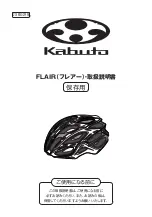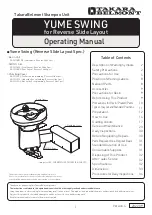
B-88-1006, REV. B
2
1.0 GENERAL INFORMATION
1.1 Introduction:
The model 781 Signal Conditioning Unit (SCU) is a compact module that may be used with all
Jewell Instrument tilt sensors. Internal SCU electronics provide simultaneous excitation of two
electrolytic tilt transducers, and condition the returned signals into two analog DC voltages. The
SCU provides both single-ended
and
differential outputs on each of its two tilt channels. You
may thus select the output that is best suited for your application.
The SCU also takes temperature readings from a National Semiconductor LM-35 temperature
sensor, providing an analog output proportional to temperature. Temperature is provided as a
single-ended output only.
This manual explains the functions and use of the three control switches on the front panel
of the SCU, and the input and output terminals on the rear panel (Figures 1 and 2). Basic
maintenance and troubleshooting guidelines are given in the last section of the manual.
1.2 General Specifications:
INPUT CHANNELS
Two Jewell Instrument electrolytic tilt
sensors, one LM-35 temperature sensor
TILT OUTPUT
Two channels of single-ended
and
differential
analog outputs proportional to tilt
OUTPUT VOLTAGE
Approximately ±8 VDC (single-ended) and
approximately ±16 VDC (differential)
OUTPUT IMPEDANCE
270 Ohms, short circuit and surge protected
GAIN RANGE
Two gains provided, x1 and x10 standard,
other gains available upon customer request
OUTPUT FILTERS
Two low-pass integrators. Roll-off = 6 db
per octave. Settling times set to customer
specifications (see Appendix B).
TEMPERATURE OUTPUT
0.1°C/mV (single-ended),
-40°C to +100°C [-40°F to +212°F]
±0.75°C [±1.35°F] accuracy
POWER REQUIREMENTS
+11 to +15 VDC, -11 to -15 VDC, 12 mA
typical, 250 mV P/P ripple max.
Summary of Contents for 781
Page 5: ...B 88 1006 REV B 4 ...
Page 6: ...B 88 1006 REV B 5 ...































